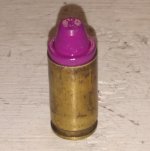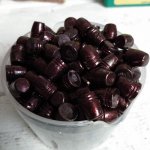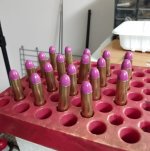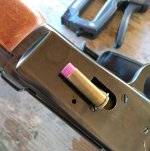Walter Rego
Member
My local indoor range does not allow lead bullets except for .22 rimfire. However coated or plated bullets are OK and of course as are jacketed bullets. I am a fairly experienced handloader but have never loaded coated or plated lead bullets before.
I have some Acme 115 gr. coated .32-20 bullets and want to load them to Cowboy Action level velocities. I have a set of Lee dies plus one of their Factory Crimp Dies. Is there anything special that I need to watch out for when using coated bullets, or just load them the same as I would any other cast or jacketed bullets?
I understand that coated bullets may be driven to slightly higher velocities and I may want to load them a bit hotter in the future but not to +P levels. Or should I just stick to the factory standard 16,000 CUP levels for the .32-20 with coated bullets ?
Lastly, anything special that I need to do regarding cleaning after firing or will standard practices with Hoppes No. 9, a bronze brush and some patches be sufficient ?
I have some Acme 115 gr. coated .32-20 bullets and want to load them to Cowboy Action level velocities. I have a set of Lee dies plus one of their Factory Crimp Dies. Is there anything special that I need to watch out for when using coated bullets, or just load them the same as I would any other cast or jacketed bullets?
I understand that coated bullets may be driven to slightly higher velocities and I may want to load them a bit hotter in the future but not to +P levels. Or should I just stick to the factory standard 16,000 CUP levels for the .32-20 with coated bullets ?
Lastly, anything special that I need to do regarding cleaning after firing or will standard practices with Hoppes No. 9, a bronze brush and some patches be sufficient ?




